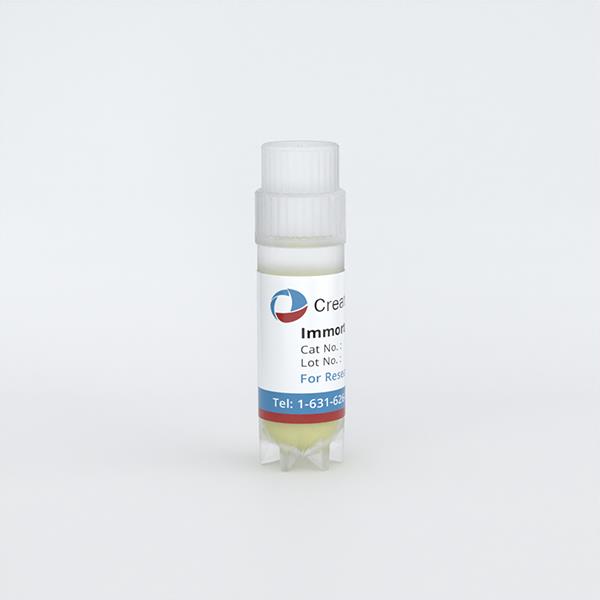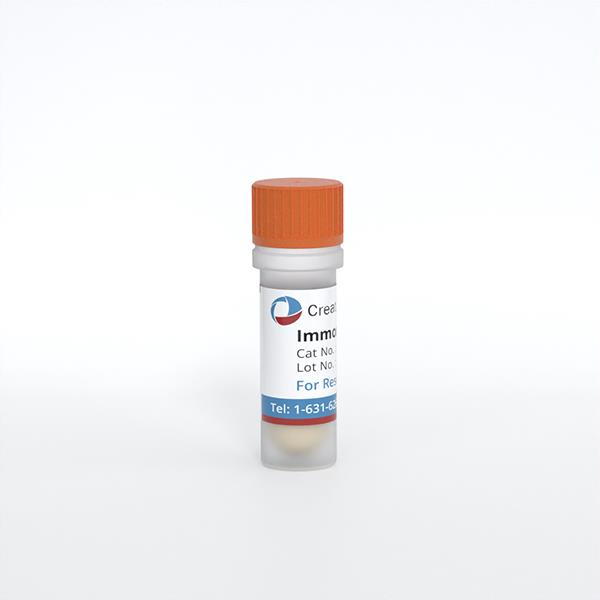
Immortalized Rat Sympathoadrenal Progenitor Cells (MAH-A3)
Cat.No.: CSC-I9220L
Species: Rattus norvegicus
Source: Adrenal Glands
Morphology: Round
Culture Properties: Adherent
- Specification
- Q & A
- Customer Review
Cat.No.
CSC-I9220L
Description
The Immortalized Rat Sympathoadrenal Progenitor Cells (MAH-A3) are derived from HNK-1+ cell population isolated from embryonic rats and that are immortalized using the v-myc oncogene. The cells exhibit morphology resembling the primary cells, and expresses progenitor-specific markers (HNK-1, TH, SCG10, and NF68) and surface antigens such as L1, N-CAM, and Thy-1. MAH-A3 cells are undifferentiated precursors that do not express NGF receptors; however but when cultured in the presence of basic fibroblast growth factor (bFGF), the cells become NGFR-positive post-mitotic sympathetic neurons. MAH-A3 cells are research tools recommended to study the sympathetic development mechanisms.
Species
Rattus norvegicus
Source
Adrenal Glands
Culture Properties
Adherent
Morphology
Round
Immortalization Method
Serial passaging and transduction with recombinant lentiviruses carrying v-myc oncogene
Application
For Research Use Only
Storage
Directly and immediately transfer cells from dry ice to liquid nitrogen upon receiving and keep the cells in liquid nitrogen until cell culture needed for experiments.
Note: Never can cells be kept at -20 °C.
Note: Never can cells be kept at -20 °C.
Shipping
Dry Ice.
Recommended Products
CIK-HT003 HT® Lenti-SV40T Immortalization Kit
Quality Control
1) Northern blot to confirm v-myc-containing pro-viral RNA transcripts and cell markers;
2) Southern blot to analyze pro-viral transcript integration;
3) Immunofluorescence staining of sympathoadrenal markers.
2) Southern blot to analyze pro-viral transcript integration;
3) Immunofluorescence staining of sympathoadrenal markers.
BioSafety Level
II
Citation Guidance
If you use this products in your scientific publication, it should be cited in the publication as: Creative Bioarray cat no.
If your paper has been published, please click here
to submit the PubMed ID of your paper to get a coupon.
Ask a Question
Write your own review
Related Products
Featured Products
- Adipose Tissue-Derived Stem Cells
- Human Neurons
- Mouse Probe
- Whole Chromosome Painting Probes
- Hepatic Cells
- Renal Cells
- In Vitro ADME Kits
- Tissue Microarray
- Tissue Blocks
- Tissue Sections
- FFPE Cell Pellet
- Probe
- Centromere Probes
- Telomere Probes
- Satellite Enumeration Probes
- Subtelomere Specific Probes
- Bacterial Probes
- ISH/FISH Probes
- Exosome Isolation Kit
- Human Adult Stem Cells
- Mouse Stem Cells
- iPSCs
- Mouse Embryonic Stem Cells
- iPSC Differentiation Kits
- Mesenchymal Stem Cells
- Immortalized Human Cells
- Immortalized Murine Cells
- Cell Immortalization Kit
- Adipose Cells
- Cardiac Cells
- Dermal Cells
- Epidermal Cells
- Peripheral Blood Mononuclear Cells
- Umbilical Cord Cells
- Monkey Primary Cells
- Mouse Primary Cells
- Breast Tumor Cells
- Colorectal Tumor Cells
- Esophageal Tumor Cells
- Lung Tumor Cells
- Leukemia/Lymphoma/Myeloma Cells
- Ovarian Tumor Cells
- Pancreatic Tumor Cells
- Mouse Tumor Cells
Hot Products

